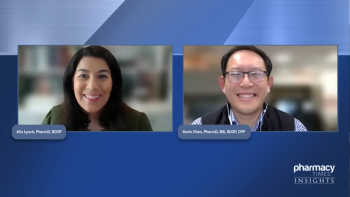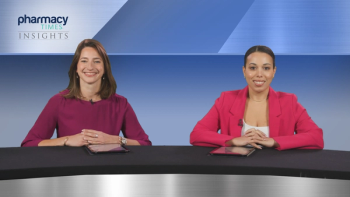
Physician Referrals and Advice From Pharmacists For Patients With Atopic Dermatitis
Shannon M. Rotolo, PharmD, BCPS, discusses what prompts pharmacists to make physician referrals to patients with atopic dermatitis and offers some beneficial advice.
Episodes in this series

Peter Lio, MD: As we head into the final couple of points, I wanted to go over again about the concept of when we should refer. What are some of the red flags or warning signs that we should be aware of? Shannon, could you talk to us about this? You mentioned some of this before but highlighting the things we should be on the lookout for. And then we could have you finish us off by telling us what are some general points of advice you have for, in particular, community pharmacists with patients who suffer from atopic dermatitis.
Shannon M. Rotolo, PharmD, BCPS: Yes. Referring at the right time is really a key piece of that. I had mentioned earlier, any sign of a bacterial infection. If patients aren’t having an improvement in their rash after an effective trial of therapy, and we know that’s going to be variable by drugs. We’ve talked about drugs where you start to see improvements in 2 weeks. As a rule of thumb, if I don’t remember the nitty-gritty for this agent and I need to give a quick answer, 6 weeks. After 6 weeks, if there’s not an improvement, I know a number of agents we use are roughly that time point, and some are less. At 6 weeks there should be at least some improvement or otherwise it’s a good time to reconnect with either their pediatrician, primary care, or dermatologist.
Another time is intolerable side effects that I and the patient can’t work together to manage. I mentioned with dupilumab [Dupixent], maybe that’s something related to the eyes. We talked about Eucrisa or crisaborole. We talked about pain with that. Working with your patient, hoping that you can manage them over the hump of that pain. If you can’t, if that’s intolerable, that’s a good time to refer back because this isn’t going to work out if you’re not able to take it.
Then another one that we haven’t highlighted but I do want to mention here is frequent psychosocial disruptions. A child that can’t go to school because of this, a parent that can’t go to work because of this. Sleep disruptions. We’ve all very sadly seen those severe cases where you’ve got a child waking up at night in tears unable to get a good night sleep and then unable to participate fully in school the next day. If you’re hearing these stories from parents at the community pharmacy, they need more support than what we’re going to give them from an over-the-counter agent. It’s time to refer to somebody who can provide some of these higher-level therapies that we talked about here today. Those quality of life issues are really a key piece of it.
What pharmacists can provide, the monitoring for safety and for efficacy, and helping families identify something that’s cost effective for them, helping our physician colleagues work through the process of prior authorizations. Oftentimes, as I alluded to earlier, it’s also a listening ear and letting that family know that they’re supported with the really high adherence burden for these medications, potentially high-cost burden as it may take multiple different types of therapies to achieve control. With some of the psychosocial considerations, making sure we’re referring on at the right time and providing that supportive environment and that listening ear and meeting our patients’ needs as best we can.
Peter Lio, MD: Thank you. We didn’t start talking about the impact of diseases as we often do in these sessions. We often take it for granted that people know, but sometimes even in 2021, people will sort of be dismissive. They’ll be like, “Oh, it’s not a big deal, it’s just a little skin thing.” I appreciate you calling those points out, the psychosocial impact not only on the patient but also on the family and beyond and how important it is that we all work together to create that therapeutic alliance rather than undermine each other and pull the rug out from under each other. It’s important that we come together because at the end of the day, we’re all trying to help the patient and that’s what they need. Thank you all. This was fantastic. I appreciate your incredible insights and wisdom, and I want to thank our viewers. We hope you found this Pharmacy Times® Peer Exchange to be rich and informative.
This transcript has been edited for clarity.
Newsletter
Stay informed on drug updates, treatment guidelines, and pharmacy practice trends—subscribe to Pharmacy Times for weekly clinical insights.







































































































































































































